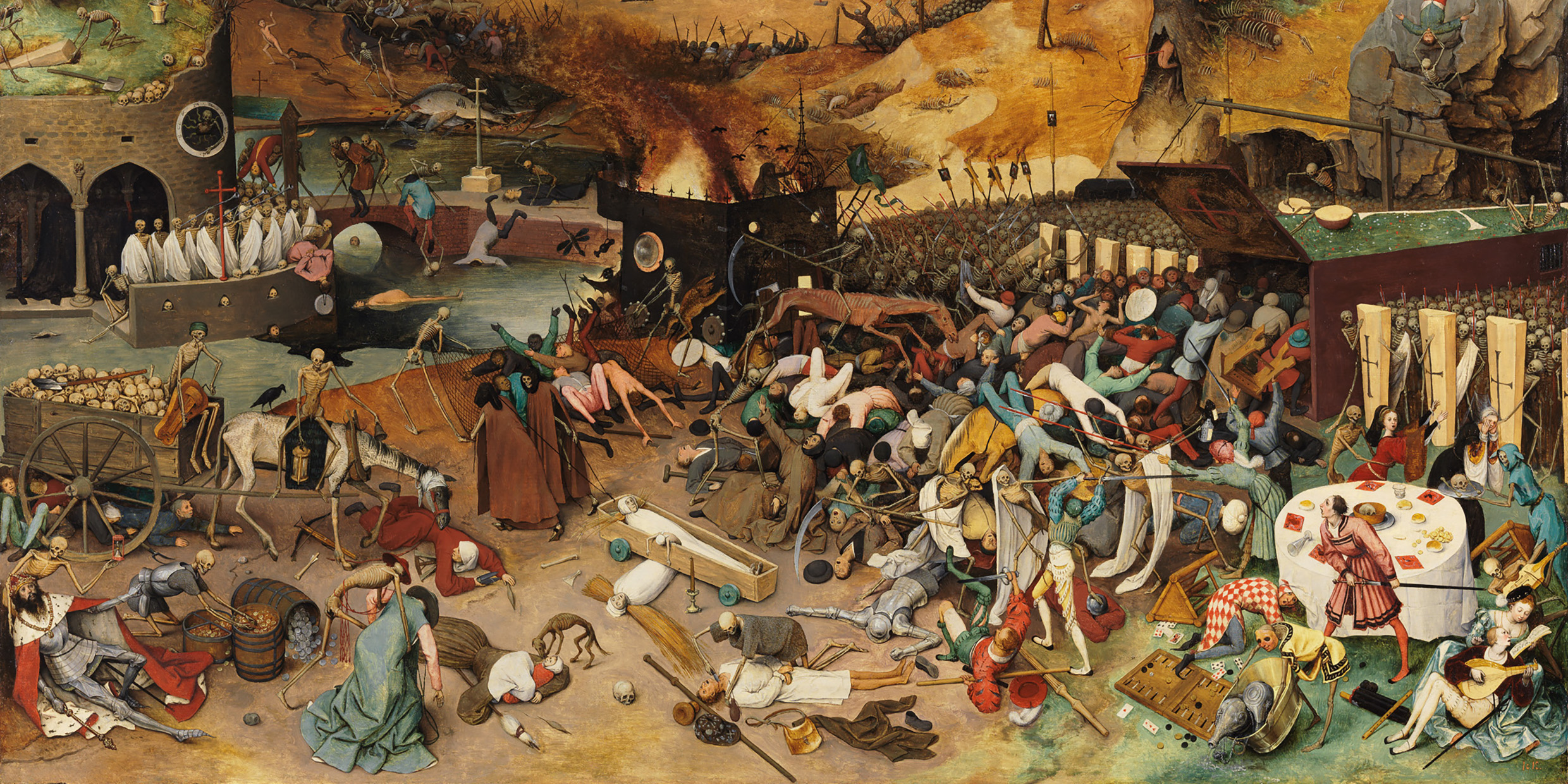Originally published 9 January 2001
For many of us of a certain age, the words “Black Death” evoke images from Ingmar Bergman’s film, The Seventh Seal.
The story is set in 14th-century Europe. The Black Death is ravaging the land. The cause of the plague, according to the priests, is a wrathful God. People go about inflicting terrible punishments upon themselves to appease God’s anger. A young woman suspected of abetting the plague by her commerce with the Devil is burnt alive.
Antonius Block, a knight, has returned from the Holy Lands with his squire. He meets black-robed Death, and is told that his time is up. The knight proposes a chess game as a delaying tactic, and Death accepts. The story unfolds as the fateful game is played.
The knight is a doubter. He cannot understand why a just God would inflict such a terrible punishment upon his creation. He can not quite live with such a God, and he cannot quite live without him.
The repeated visitations of the Black Death — bubonic plague — to Europe during the late Middle Ages were certainly traumatic. As many as one-third of the population died in a single visitation, agonizingly. The disease seemed to come from nowhere and depart as mysteriously. No wonder people looked for a transcendental cause.
But, of course, God or the Devil had nothing to do with it. The culprit is a tiny bacterium called Yersinia pestis, which is just doing what all living things do — trying to continue living. The bacterium’s primary hosts are rats that live in proximity with humans. The disease is carried from rats to humans by fleas, which feed first on the infected blood of rats and then bite humans.
Although the days of plague pandemics are past, the disease continues to affect at least 1,000 people a year. Scientists are trying to figure out how Yersinia pestis does its damage. Findings by researchers led by biochemist Jack Dixon of the University of Michigan reveal further details of how the bacterium attacks the human body.
What they discovered is little short of astonishing.
When a cell of the human immune system encounters an invading pathogen — a virus or bacterium — it sends out a chemical call for help to other immune cells. The summoned cells, together with the summoner, gang up on the pathogen and take it apart.
Yersinia pestis has evolved a brilliant strategy for thwarting this defensive response. The bacteria hovers just outside an immune cell and shoots into the cell a protein called YopJ. This magic bullet protein instantly dismantles the immune cell’s ability to send out the call for help. Effectively silenced and on its own, the immune cell is now easy work for Yersinia pestis’s other destructive proteins.
As millions of infected folks in the Middle Ages lay dying a wretched death, calling to God for mercy, Yersinia pestis was going about its carefree business of making more copies of itself at human expense, shooting its YopJ bullets like secret assassins.
I watched the film, Where Eagles Dare, the other day. Richard Burton and a small band of Allied agents infiltrate a Nazi castle stronghold in Bavaria during World War II. Zap, zap, with a silenced revolver, the invaders kill off Nazi sentries one by one before they can raise the alarm. By the time the Germans finally manage to get their defensive act together, the castle has been pretty much blasted apart and the Allies have accomplished their mission. It is the old Yersinia pestis story all over again.
No less astonishing than the story of how Yersinia pestis does its dirty work is the story of how the biochemists are figuring it all out. Using computers and painstaking biochemical experiments, the researchers are working out the exact mechanism by which YopJ and the other proteins deployed by Yersinia do their job.
Protein chemistry is pretty much all a matter of geometry. Proteins are strings of chemical units called amino acids. The amino-acid sequence determines the shape of a protein, and the shape determines how the protein acts. When YopJ attacks the immune cell’s SOS protein, for example, it’s a matter of fitting the right key into the right hole. Knowing how a pathogen acts is the first step to finding a drug that will block the action.
And speaking of Block, in Bergman’s The Seventh Seal, Death asks the knight, “Don’t you ever stop asking questions?” To which Antonius Block replies, “No, I’ll never stop.”
It’s human curiosity, as exemplified by Jack Dixon and all the other researchers who tease apart the riddles of nature, that has set us mostly free from the horrors of the Black Death — and the equally horrendous self-flagellations and judicial murders that accompanied a false notion of why people die of pandemic disease.



